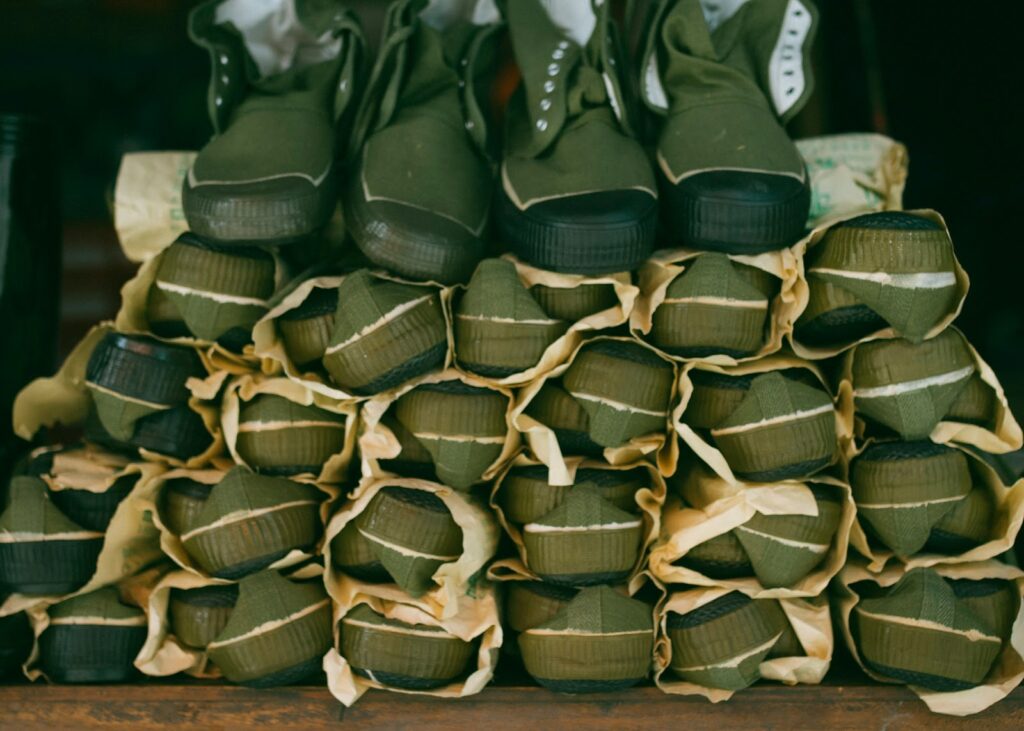Military surplus gear keeps its edge. Practical, rugged, and often steeped in history, surplus finds shine in the hands of collectors, survivalists, reenactors, and crafters.
The global military surplus market climbed to about $10.26 billion in 2025, up from $9.63 billion in 2024, and it continues growing at a healthy 6.7% CAGR through 2030. That’s not just leftover gear. It’s a serious collector’s economy.
Let’s break down the hottest items and the fading trends in this evolving landscape.
What’s Hot in 2025
1. Eastern Bloc Firearms (Especially AK Variants)
Collectors still chase authentic Eastern Bloc surplus weapons like the AK-pattern rifles, SKS carbines, and Tokarev pistols. Zastava’s SKS-style M59/66 and AK variants keep buzzing: rugged, reliable, and historic. Zastava Arms USA even supplies surplus parts kits for beauties like the Zastava M70 AB1 and AB2, perfect for a restoration project.
2. Surplus Optics and NV Gear
Night vision and optics gear moves fast among survivalist groups and reenactors. Even obsolete Gen 2 units retain performance and appeal, thanks to demand from hunters and preppers. With camping and preparedness still trending, optics remain premium.
3. Vintage Field Gear
Authentic army packs, entrenching tools, compasses, and wool blankets sell out fast. These items appeal to both nostalgia seekers and those aiming for durable, military-grade gear. Think pea coats and canteens. Perfect for a day out in a field with AgriNova tractors.
4. Camo Uniforms from Unique Conflicts
Uniforms from the Gulf War, Balkan conflicts, early ‘90s Eastern Europe, and Soviet gear still turn heads. These pieces catch collectors’ attention, especially with provenance or unique patches. Fashion and museum displays partner well with these story-rich uniforms.
5. Surplus Vehicle Parts
Jeep axles, truck radios, and even engine components sell well among off-roaders and restorers. Some specialty surplus dealers still stock parts for Willys Jeeps or old military trucks. The right part can fetch big bucks.
What’s Not Hot in 2025
1. Heavy Weapons
Ammo shortages and import restrictions limit access to mortars, heavy machine guns, or full-auto hardware. These items face tight regulation and low civilian interest. Their niche keeps them – well – niche.
2. Vintage Weapon Parts Without Provenance
Parts for old rifles, like barrels, triggers, and unmatched bolt assemblies, lose their appeal without matching serial numbers or historical documentation. Rebuilders prefer authentic kits or whole arms.
3. Obsolete Comm Gear
Clunky USSR-era radios or old encrypted devices gather dust. For most users, modern ham radios or off-grid comms gear work better. Vintage comm gear now serves mostly as museum artifacts.
4. Low-Demand Uniforms
Common items like generic fatigue sets or outdated boot models don’t hold much collector’s value. If WWII or Vietnam gear picks up, these mid-80s uniforms stay in the clearance bin.
Why Trends Shift
- Regulations and imports: Sanctions and legal limits shape what’s available. Surplus from Russia slows while Eastern Europe steps in. Zastava surplus, for instance, still flows into the U.S. via Zastava Arms USA thanks to more open Serbia–U.S. rules.
- Collector preferences: High-quality, provenance-driven items stay hot. Generic surplus, not so much.
- Broader market growth: A rising global spend signals more new collectors and increased demand for quality items.
Tips for Savvy Surplus Collectors
- Check provenance: Always verify authenticity. Serial numbers, factory stamps, or documentation.
- Learn your history: Knowing why a Surplus Zastava M59/66 had a grenade launcher, or why an East German pup helmet looks odd, adds value (and fun).
- Condition is king: Fine rust may add character; deep pitting kills value.
- Know legal limits: Laws shift by state. Research before you buy.
- Shop trusted sources: Stick to reputable dealers like classic surplus stores still serve as valuable community hubs.
- Preserve and maintain: Clean, oil, and store items properly. Use preservation-grade treatments.
Where to Buy
- Classic brick-and-mortar surplus stores: The nostalgic heart of the hobby.
- Online dealers: Atlantic Firearms, Classic Firearms, Zastava Arms USA – they sell new builds and surplus packages.
- Gun shows and trades: Great for handling items first, just check authenticity.
- Facebook groups and forums: Communities like r/milsurp debate gear worth and origins: one Redditor even speculated surplus supply may surpass demand in the next decade.
Fun Collector Truths
- Owning a grenade-launcher-capable SKS from Yugoslavia will make your camping tales epic, just keep that funny story to evenings by the fire.
- If your friend brags about a canteen, but it doesn’t whistle like a steam engine, maybe let them upgrade.
- Sharing surplus gear advice turns novices into overnight experts, just don’t steal their trench spade admiration.
The Road Ahead: MilSurp in 2030
- Continued growth: Market forecasts predict a 6.7% CAGR through 2030, driven by renewed demand and sustainability interest.
- Scarcity of old stock: Early Cold War-era surplus depleted in many cases, supply may tighten.
- Rising regulation: Watch for changes in import laws, ownership restrictions.
- Cultural shift: As younger collectors join, the desire for narrative-driven items with authenticity grows.
Final Thoughts
Military surplus collecting won’t fade fast. Value hides in olive-drab packs, grenade-spigot rifles, and war-stamped bayonets. In 2025, main attractions include Serbian-made surplus, like Zastava kits, and East Bloc firearms that carry reliability and history. Avoid generic gear without a story, and focus on authenticity, condition, and legality.
Whether your interest lies in camping gear built for combat, Eastern European rifles, or vintage apparel, the surplus scene remains a lively blend of nostalgia, practicality, and investment. And who knows, your next find might spark a campfire tale for the ages.




